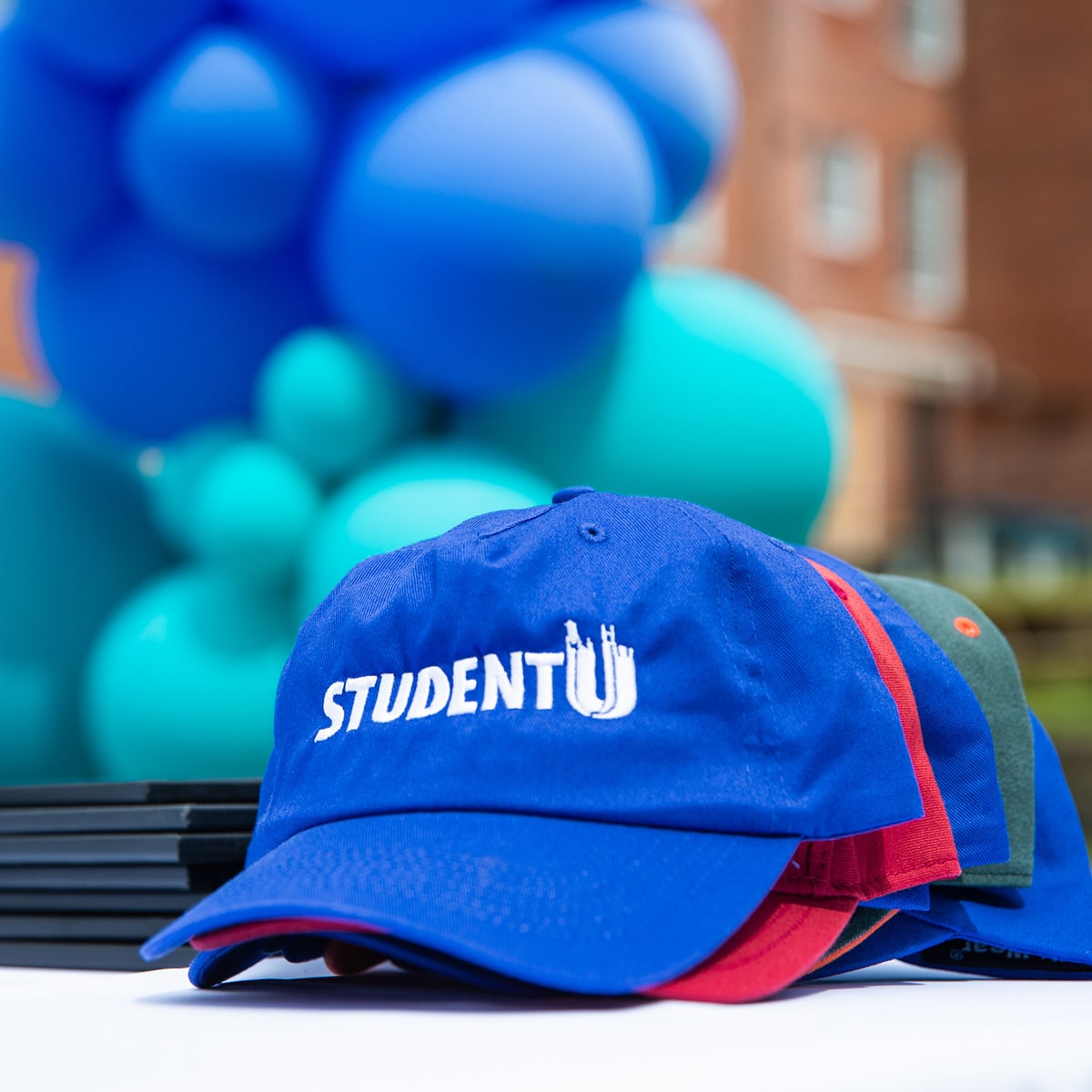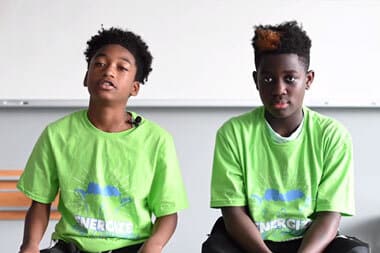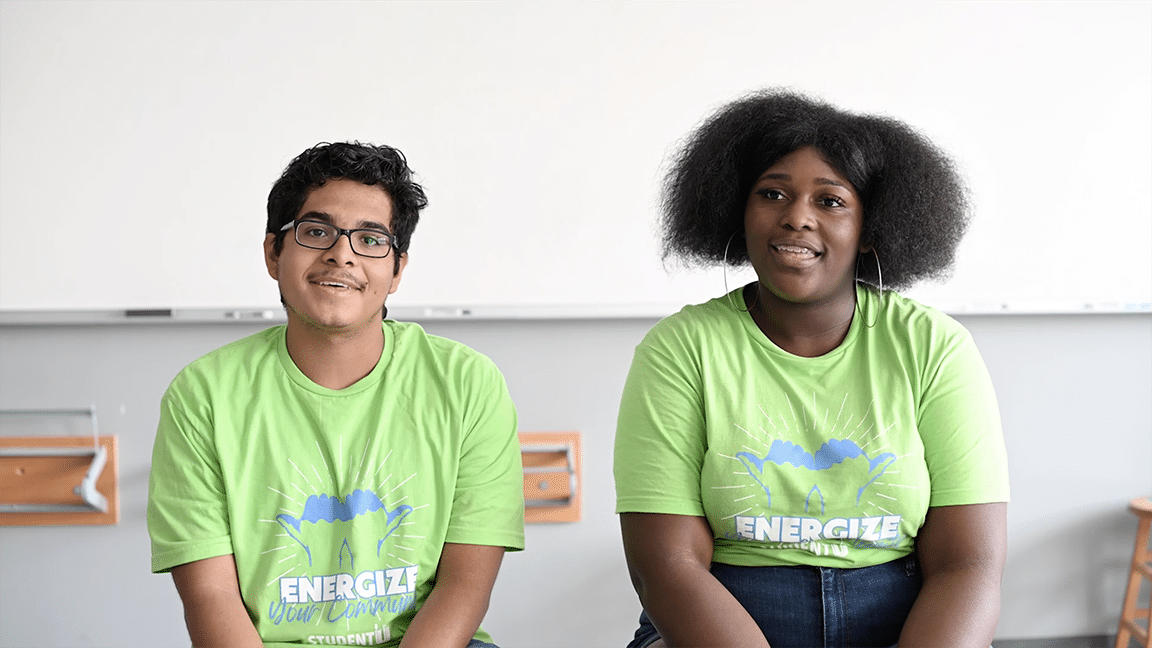
Youth Work 101: Processing the Election with Students
By: Tracey Barrett
Welcome to the Youth Work 101 Series! Student U started this blog series to support youth work practitioners, educators, advocates for young people, and after-school professionals in their work by sharing what has worked for us and by offering free resources each month on a best practice. Click here to see previous posts in this series.
This blog on Processing the Election with Students is paraphrased from an interview with Tracey Barrett, a Student U Advocate and High School Social Studies Teacher in Durham Public Schools.
Congratulations to Vice President-Elect Kamala Harris for being the first Black woman Vice President! We are energized and excited about this historic win. With the election continuing to progress and many legal challenges anticipated, Student U is taking this moment to offer five strategies for educators to process this moment together.
Strategy #1: Actually Talk About Elections
That’s right, talk about elections! For many students, elections can seem confusing, boring, or opaque because they don’t have a clear sense of the stakes – how the outcome of elections impact their lives. Discussing the election is the first step to teaching about government and policy: name that elections have consequences and peoples’ lives change based on choices voters make about who should be in power.
From an equity standpoint, talking about elections is also an important opportunity to highlight that things are the way they are because of decisions. From the decisions of voters to those of special interest groups, to elected politicians who decide what policies to pass – these decisions affect our lives in both small and big ways. Elections can impact who gets health insurance, affordable housing, food support, or financial aid to go to college. Talking about an election is an important first step to highlight all of the ways decision-makers wield power and shape our lives, and is vital to developing critical thinking skills in students.
Strategy #2 – Name Your Values
All too often teachers feel pressure to be seen as ‘unbiased’ when discussing current events or political issues. There is no such thing as ‘unbiased.’ All of us have subjectivity and bring that subjectivity into our teaching and learning. It is important to be honest with both yourself and your students about what values you bring into the classroom. I let students know on the first day of class that I believe Black Lives Matter and that no human beings are illegal. If I didn’t name this, it would be a form of dishonesty rather than objectivity. My students know what my opinions and beliefs are, and they are allowed to disagree! The decisions I make as a teacher are shaped by my values, and being open about that helps students be more willing to share their own values when you lead with authenticity. This also can help foster an environment where students have freedom to articulate their own values and beliefs.
Strategy #3 – Teach About Race and Racism
As a Social Studies teacher, I’m not even sure how you would approach teaching without discussing race and racism. An honest account of U.S. history requires looking directly at the ways in which racism has been the foundation of many institutions and systems. Whether or not you have conversations about race, power, and elections in class does not change the fact that students’ lives are impacted by those things. It does impact how prepared students are to navigate the world with these forces at play.
Teaching this painful and hard history is essential regardless of the demographics of your classroom. If your class is composed of mostly white students, it is just as or even more important to teach in a way that both acknowledges structural racism and affirms the humanity of people of color and the long history of resistance to oppression. We are all impacted by racism, as this election makes that abundantly clear.
Strategy #4 – Listen and Validate Students’ Feelings
Because of the experience of teaching through what feels like a constant stream of police murders of Black people, I have shifted my teaching approach on current events that can evoke strong responses from students. Rather than give information first, I start with a check-in to see how students are doing. Sometimes educators can be tempted to feel like it’s their job to tell students how they should understand an event because “we’ve read more articles than they have,” but sometimes when we, especially white teachers, are talking about something truly traumatic, we have to stop throwing information at students long enough to pause and let them share what they know and feel. Some students may not feel intense emotions about a particular event, and that’s okay too! What’s important is to not judge and to affirm their feelings, while remembering that for some people, this topic may be a lot. Start by centering students’ emotions first, always.
Strategy #5 – Analyze Media & Language Together, Teach Media Literacy
After listening to and affirming students’ emotions, it can then be really effective to participate together in analyzing a shared vocabulary, text, video, photo, or another medium. Media literacy is a skill that is not always explicitly taught, but talking about the election can be a great opportunity to do so. We can ask, why did these two news outlets cover the same event in completely different ways? It doesn’t have to be an entire New York Times or Wall Street Journal article — you can do this comparison with media that your students are consuming. I’ve asked students to analyze TikToks contrasting two viewpoints on a current event. Being able to evaluate and assess the validity of different media and information they learn online is one of the most important skills students need to successfully navigate the world and become informed voters themselves.

What do I say Now?
I’m really inspired by what happened in Georgia. Not only because there was a few thousand vote margin in the presidential race, but because years of work by organizers on the ground building community power separate from elections is what made this electoral outcome possible. What I want to say to students who feel confused or frustrated that North Carolina didn’t vote for Biden or that so many came to support Trump is that what happened in Georgia can absolutely happen here, but it’s up to us. We have work to do in North Carolina, but we can do it!
An image I often use with my students is this: US political history is like a pendulum that can swing back and forth, from left to right — but not on its own. It is pushed, in one direction or the other, by everyday people. You have the power to push on the pendulum. A lot of the pushing work is unglamorous — making calls, knocking on doors, having conversations with your neighbors and loved ones, asking people what they care about, asking them to be in solidarity with one another, plugging into organizations that are building community. Organizing work is not always thrilling, but anyone can do it — and it is critical to making the pendulum swing toward policies that are just and fair for everyone.
There isn’t a shortcut to liberation. As teachers, it’s our job to make sure students have the tools to do the difficult work. It is the only path forward.
Additional Resources:
- The Ida B. Wells Education Project is a collective of multicultural classroom educators who’ve come together to build the movement against racism in schools and classrooms across the US. Several of the ideas I’ve described here were taught to me by Peta Lindsay, the founder of the IBWEP.
- I often default to Teaching Tolerance’s protocols for class discussion – there are a lot of them, and a lot of different formats that are tried and true.
- Facing History and Ourselves offers excellent best practices for history educators for teaching difficult political topics, hard history, and challenging subject matter that can be emotionally intense.
Until next time.
—
Find these strategies helpful? Click here to download Student U’s printable guide to Processing the Election with Students and subscribe to our Youth Work 101 Series.
Donate to Student U and keep posts like this one coming.









